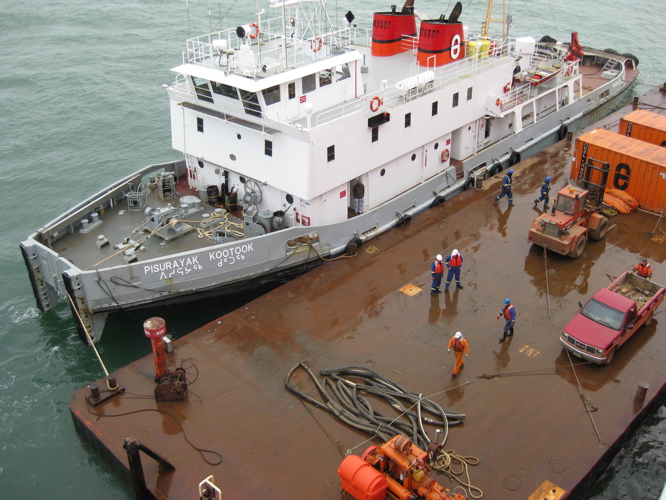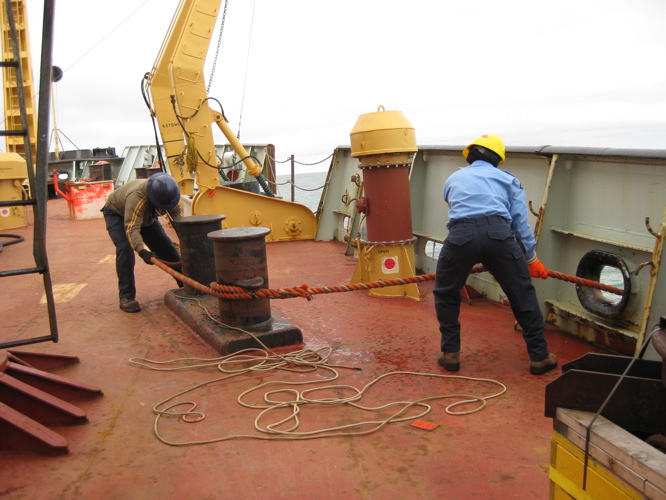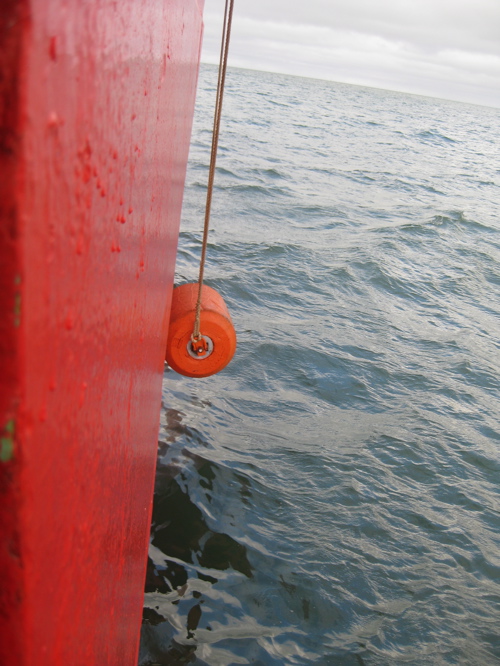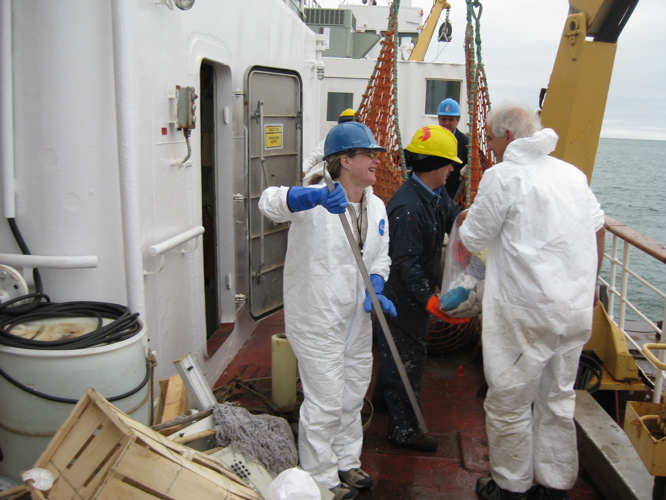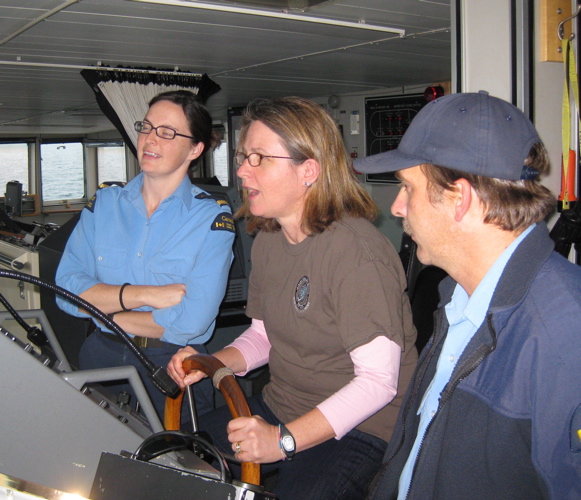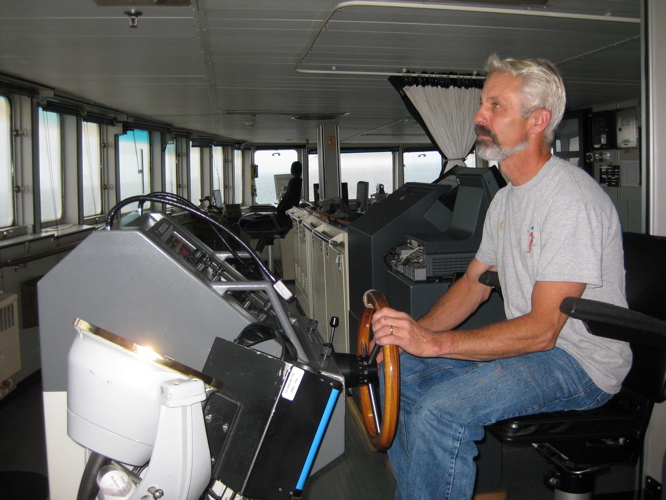Gerty WardAugust 17, 2008We have been here at 69N, 133W waiting for the fuel barge for the past 24 hours. It is late. While it is frustrating to have to wait, this situation reminds us that it is not worth getting worked up over something we cannot control. We use the time to catch up on data analysis and to pack. Finally the barge arrives. While watching the fuel barge hook up might not be so fascinating under normal circumstances, we have been waiting for it, and it offers something new in the landscape. The barge is tied up to the side of the ship
We take on approximately 2 million liters of fuel. It is delivered at 120 cubic liters per hour (1200 liters) and we took on 2 million liters. The fuel is piped in to the ship to the fuel manifold which diverts the flow to one of 14 tanks. Icebreakers need the extra weight of the fuel to break ice most efficiently. The bill? About $2 million Canadian. Our incinerator has not been working so we also off-loaded our trash onto the barge. This required several sling trips. It was dirty, smelly work. Wow, 78 people sure do generate a lot of garbage!
Once we had finished fueling we began to steam north. I took this opportunity to drive the ship! The LSSL is very responsive. It took me quite a while to learn to account for the wind and currents while staying on the course directed by the Third Mate. The wheel moves the rudder. Adjusting only about 10 degrees to the port and starboard was all that was needed to kept us on track. While I was at the helm, the engine speed was constant. Varying the propeller speed and the number of shafts turning is another way to control the ship's speed. Will Ostrum also drove the ship. He is a far better driver than I.
Last updated: October 7, 2019 | |||||||||||||||||||||||||||||
Copyright ©2007 Woods Hole Oceanographic Institution, All Rights Reserved, Privacy Policy. | |||||||||||||||||||||||||||||


